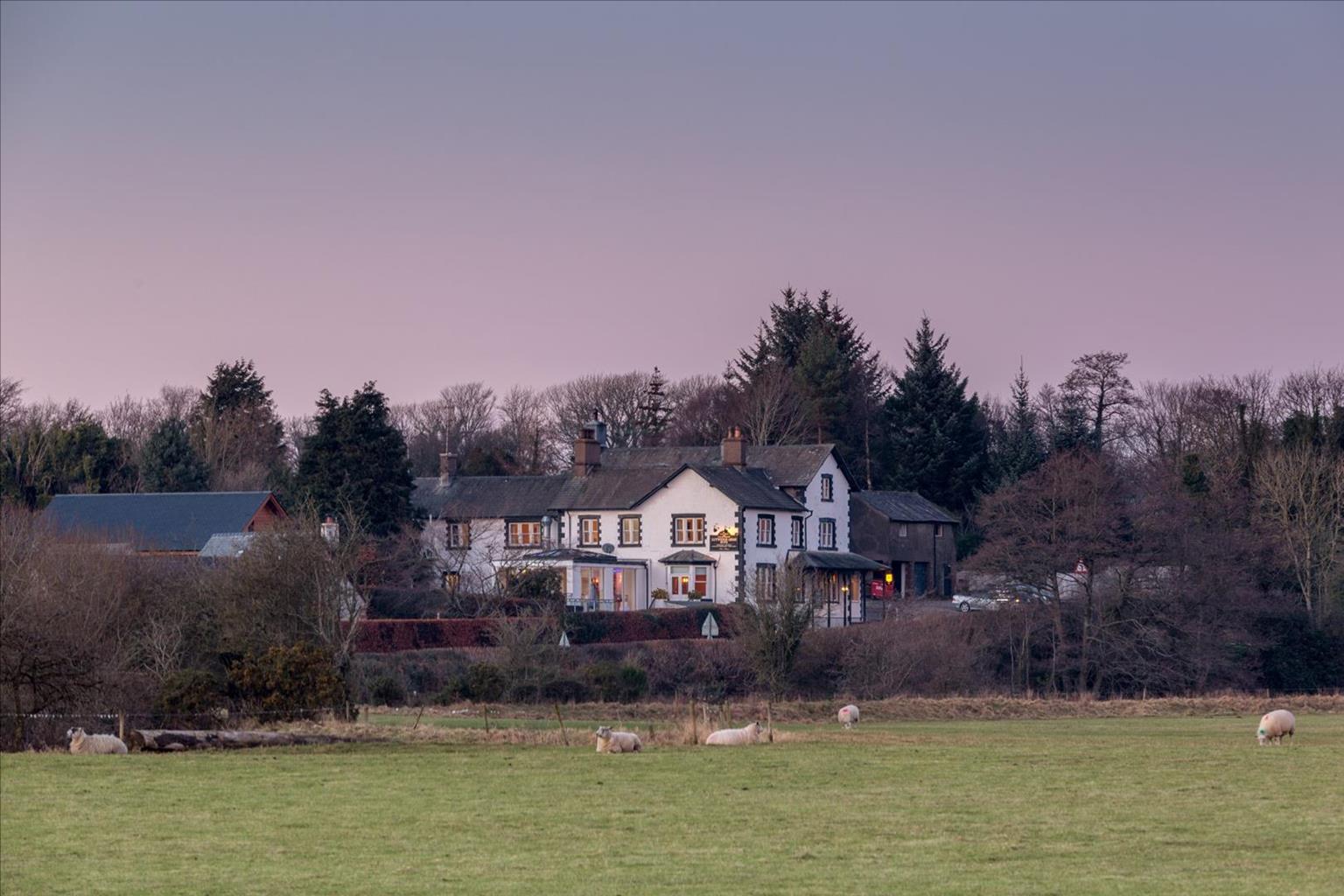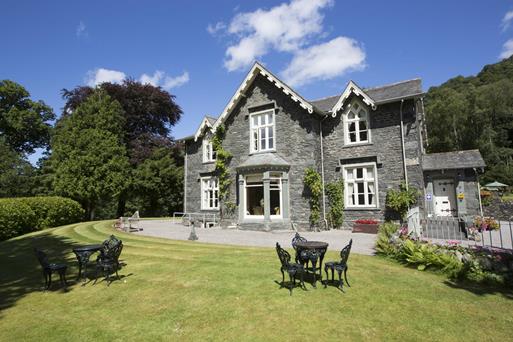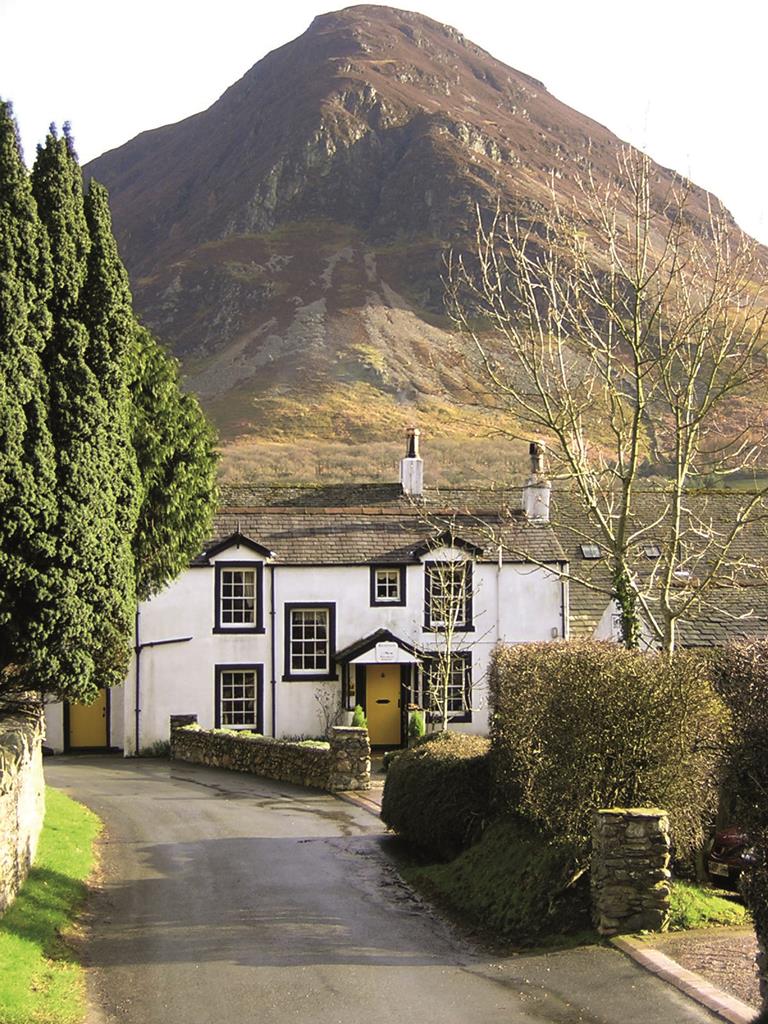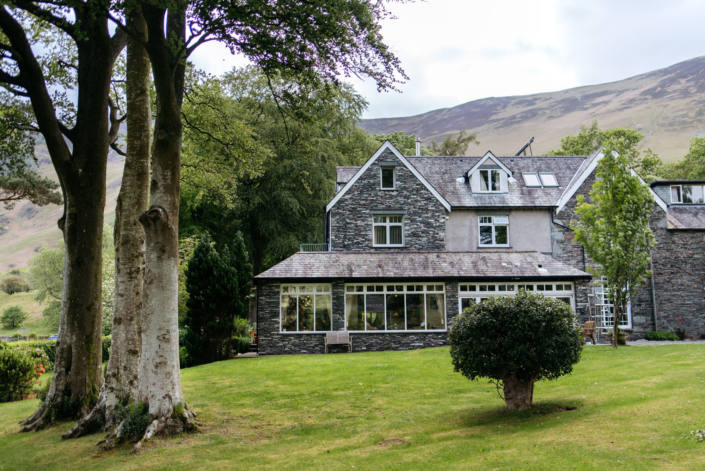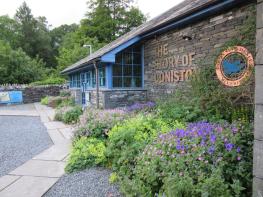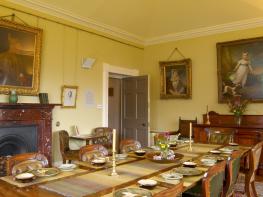The Pennington Hotel has a prominent location in the coastal village of Ravenglass and offers a…
Over Muncaster Fell from Ravenglass

A fine linear walk from Ravenglass to Eskdale Green, returning on La'al Ratty.
6 miles (9.7kms)
About the walk
Muncaster Fell is a long and knobbly fell of no great height. The summit rises to 758ft (231m), but is a little off the route described. A winding path negotiates the fell from end to end and this can be linked with other paths and tracks to offer a fine walk from Ravenglass to Eskdale Green. It’s a linear walk, but when the Ravenglass and Eskdale Railway is in full steam, a ride back on the train is simply a joy.
Affectionately known as La’al Ratty, the Ravenglass and Eskdale Railway has a history of fits and starts. It was originally opened as a standard gauge track in 1875 to serve a granite quarry and was converted to narrow gauge between 1915 and 1917. After a period of closure it was bought by enthusiasts in 1960, overhauled and re-opened, and is now a firm favourite for visitors. The line runs from Ravenglass to Dalegarth station, near Boot, at the head of Eskdale. The railway runs daily from mid-March to October, plus selected days in winter – check the timetable for details.
The Romans operated an important port facility at Ravenglass. Fortifications were built all the way around the Cumbrian coast to link with Hadrian’s Wall and a Roman road cut through Eskdale, over the passes to Ambleside, then along the crest of High Street to link with the road network near Penrith. Some people think the Romans planned to invade Ireland from Ravenglass, though this is a subject of debate. The mainline railway sliced through the old Roman fort in 1850, leaving only the bathhouse intact, though even this ruin is among the tallest Roman remains in Britain. The Romans also operated a tileworks on the lower slopes of Muncaster Fell.
Surrounded by luxuriant rhododendrons, Muncaster Castle is almost completely hidden from view. It has been the home of the Pennington family since about 1240, though they occupied a nearby site even earlier than that. The estate around the castle includes a church that was founded in 1170, as well as a network of paths and tracks to explore. Owls are bred and reared at Muncaster, then released into the wild.
Walk directions
Leave the car park by the footbridge over the railway lines, then follow the path to a road. Turn right, signposted ‘Roman Bath House’. Pass a campsite, then use a footpath alongside the lane to reach the Roman bathhouse.
Continue along the access lane then fork left on a track signposted ‘Esk Tr’. Turn left again before houses and follow another track up a little wooded valley. Pass a little lake then walk between fields. Enter another wood, then turn left by the Muncaster Castle ticket office and shop, and out to the A595.
Turn right along the road, changing sides near a phone box. The road leads up to a bend, where Fell Lane is signposted uphill. Ascend the clear track, cross a little wooded dip, then fork right and left, noticing Muncaster Tarn on the left. Go up then through a gate and soon emerge onto Muncaster Fell.
Walk alongside a plantation of conifers on your left. Where this ends, a path rising to the left leads to the summit – otherwise keep right to continue on the walk.
There are several possible paths now, but the best route for views is to fork left on a rising path about 200 yards (183m) beyond the end of the plantation. Follow the main path along the ridge. This arrives at a steep little descent overlooking a broad boggy area, where alternative routes reunite.
Drop down and loop leftward around the boggy area to reach a gateway at the corner of a dry-stone wall. Descend parallel to the wall then cross a broad saddle to a built-up track rising round the right side of a knoll. Follow the drier track winding down, through a gate in a wall and round a final knoll (Rabbit How) to a crossing track.
Go through the gate and then turn left across the field, past a large boulder, to a wall enclosing trees. Bear right along the wall, then keep it on your left through the next field, which funnels down to a ford with stepping stones; a narrow track continues. Where another track crosses your path, find The Green station at Eskdale Green just above.
Additional information
Clear tracks and paths, muddy in places
Woodlands, moderately rugged fell and gentle valley
Under close control where sheep are grazing
OS Explorer OL6 The English Lakes (SW)
Village car park at Ravenglass, close to station
Near the car park at Ravenglass station
WALKING IN SAFETY
Read our tips to look after yourself and the environment when following this walk.
Find out more
Also in the area
About the area
Discover Cumbria
Cumbria's rugged yet beautiful landscape is best known for the Lake District National Park that sits within its boundaries. It’s famous for Lake Windermere, England’s largest lake, and Derwent Water, ‘Queen of the English Lakes'. This beautiful countryside once inspired William Wordsworth and his home, Dove Cottage, in Grasmere is a popular museum. Another place of literary pilgrimage is Hill Top, home of Beatrix Potter, located near Windermere. Tom Kitten, Samuel Whiskers and Jemima Puddleduck were all created here.
Much of Cumbria is often overlooked in favour of the Lake Distirct. In the south, the Lune Valley remains as lovely as it was when Turner painted it. The coast is also a secret gem. With its wide cobbled streets, spacious green and views of the Solway Firth, Silloth is a fine Victorian seaside resort. Other towns along this coastline include Whitehaven, Workington and Maryport. Carlisle is well worth a look – once a Roman camp, its red-brick cathedral dates back to the early 12th century and its 11th-century castle was built by William Rufus.
Nearby stays
Restaurants and Pubs
Nearby experiences
Recommended things to do
Why choose Rated Trips?
Your trusted guide to rated places across the UK
The best coverage
Discover more than 15,000 professionally rated places to stay, eat and visit from across the UK and Ireland.
Quality assured
Choose a place to stay safe in the knowledge that it has been expertly assessed by trained assessors.
Plan your next trip
Search by location or the type of place you're visiting to find your next ideal holiday experience.
Travel inspiration
Read our articles, city guides and recommended things to do for inspiration. We're here to help you explore the UK.

